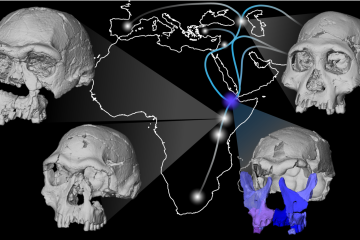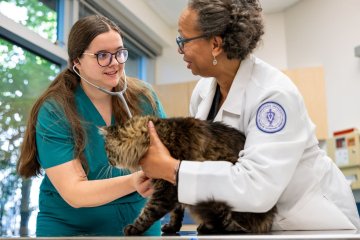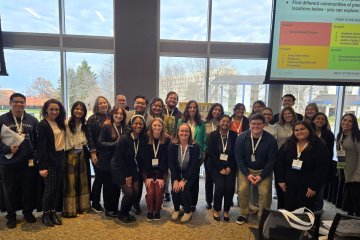Midwestern University Eye Institute Offers Pediatric Eye Care Webinar for the Community
Tips for proper pediatric eye care
- IL - Downers Grove
- MWU Clinics
About one in five preschool children experience vision issues, and 25 percent of school-age require corrective lenses, according to the American Optometric Association. Midwestern University’s Eye Institute conducted the webinar “Seeing Success: Ensuring Healthy Vision for Infants and Toddlers in the Classroom” to inform the community about pediatric eye care for children and offer preventative care, advice, and answer questions.
The webinar was led by Clint Roger Prestwich, O.D., FAAO, Assistant Professor, Chicago College of Optometry (CCO), who offered his expertise. “Vision is essential for learning and development. If we have disruptions in our visual system or in our eyes, then those disruptions can result in a lot of different problems and issues. Problems with our vision can result in a disruption of normal childhood development. As humans, we’re visual creatures. Vision is our primary sense. We use our visual system to interact with the world all the time. If our visual system is compromised in any way, then that can impede overall development,” Dr. Prestwich said. Any issues with eyes and vision can negatively affect children’s self-esteem, social interaction, childhood development, and academic performance in school. “If we have issues with our visual system, then it can also lead to reduced school performance. If a child has blurry vision, it’s going to be tough for them to read. It’s going to be tough for them to succeed in school, and to learn the things they need to learn. Sight is necessary for reading, and reading is necessary for learning. One of the first things we need to ensure for our children is that they have good, clear vision so they can have good school performance,” he said.
Dr. Prestwich highlighted key signs and symptoms to look for in children that could indicate a potential vision issue including eye strain, squinting with one eye, double vision, blurry vision, and headaches. If a child says the board is not clear at school, works hard to keep their eyes in one direction, or struggles with depth perception, then these could all be an indication of an underlying issue. These issues include astigmatism, hyperopia (farsightedness), myopia (nearsightedness), amblyopia (lazy eye), strabismus (eye turn), and convergence insufficiency (the eyes do not work together as a team).
Eye issues can be missed in children without an eye exam. When a child is taken to a pediatrician, their eyes are checked one at a time as they read letters; however, this exam does not cover all potential eye issues, such as convergence insufficiency, Dr. Prestwich said. The children’s first eye exam should take place between the ages of six to 12 months. Between the ages of three and five, children should have at least one eye exam. For children aged six to 18, annual eye exams are advisable. The parents or guardians should prepare children for the eye exam by telling them there are no shots, there will be bright lights that will not hurt, and they might receive drops in their eyes. Eye exams can also detect other health issues. “The eye gives us a window into how the rest of the body is functioning,” Dr. Prestwich said. In children, eye exams can indicate evidence of tumors, and in adults, there may be signs of diabetes and high blood pressure.
Dr. Prestwich added that parents or guardians should encourage children with visually guided movement, such as playing catch, putting together puzzles, popping bubbles, and playing with blocks. “Playing catch is actually a fairly complicated visual task. You’re throwing a ball. They have to track the speed, the location, and the elevation of that ball as it’s coming towards them. And then they have to react with their body to place their hands in the correct position to catch that ball. Playing catch with stuffed animals or large balls is a great tool to help encourage the proper development of their visual system. Popping bubbles is similar. Popping bubbles requires good depth perception, good visual tracking, and good hand-eye coordination. Puzzles go beyond just the ability to track objects and predict where they’re going to be. It goes into different skills and abilities in visual perception, called visual information processing.”
Once the eyes gather the information, the brain must correctly interpret them and determine if the shape is a circle, square, or cloud, Dr. Prestwich said. Children “learn to see a part of something and recognize its part of a greater whole, and they can make those connections and develop those visual processes in a better way.” He also advised children to limit screen time on devices and spend time outdoors. If children participate in activities that require protective eyewear, then the children should use the recommended eyewear.
Midwestern University holds informational webinars as a part of its commitment to healthcare and community service. The Eye Institute is located in Downers Grove and Glendale. The Optometry program is also offered on the Downers Grove and Glendale campuses.



